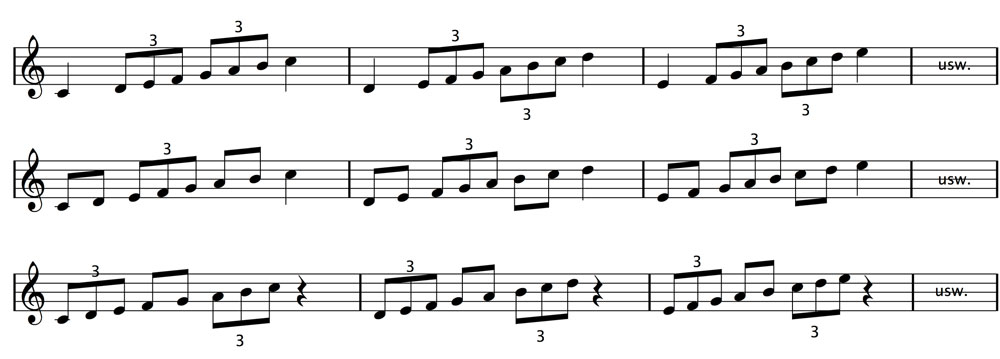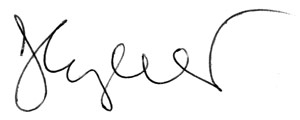Scales are something you need to practice...
"Scales are something you need to practice: one scale a week. If you skip a week, you must practice two scales the following week!" That is what my teacher used to tell me. It was quite stressful actually, especially since the scales became increasingly difficult what with all those strange fingerings involved...
And, yes, I still practice scales with my own students! I hope I will manage to explain the sense of this training and encourage you to create your own scale exercises. After all, the time spent on scales is only time well spent if you are really committed to the exercises.
Useful motion sequences
Scales (and triads, which are not covered here) allow us to practice "useful motion sequences". Lots of passages in almost any piece contain scale particles. The motion sequences we "store" come in handy whenever we need to play at sight. Ideally, reading the notes allows us to identify the scale we are playing, which in turn causes us to "recall" the motion sequences we "stored" earlier. Playing at sight would be next to impossible if we had to read every single note.
...like learning how to read
It is quite similar to how young kids learn how to read: They start out by reading the various letters and then combine them into words. The more you do this, the easier it becomes to string the letters together. At some point, looking at a "bunch of letters" will be enough to recognize the word.
Suggestions for various motion sequences
The following suggestions can also be applied to scales. Let us therefore use them as examples. Try to set yourself new challenges and create new combinations frequently to avoid boredom.
If, while practicing, you start thinking about the groceries you need to buy or the people you need to call back, you definitely need a new challenge!
'To the End of the Flute and Back’ Movements
- Always use the complete range of your flute (all notes/fingerings you know). Don’t stop at the next fundamental! This allows you to practice the motion sequences in the extreme registers of your flute.
- Playing legato allows you to spot problematic notes more easily.
- Don’t play too fast, or don’t only play fast"”a medium tempo helps you to find out whether you are actually in control of your fingers. Some licks may indeed only work when played as licks (which can be useful in some situation, but not always).
- Embouchure is a good ancillary aspect for scale practicing. Try to select sections whose length matches what you wish to practice:
- If your fingers seem to run like clockwork, work on your breathing technique by playing longer scale sections.
- If you wish to concentrate on finger movements, shorter sections are more efficient, because you won’t have to worry about air flow in different registers..
- Articulation can be another element for more challenging scale exercises. But again, only add this if that is at least as important as your motion sequence.
A little game to boost your motivation:
Choose the key at random! Assign a number to each key and then roll a dice to select the scale to play next. I have seen dices with 12 possibilities, by the way!
Decide whether you want to add a rest after each measure (allowing you to breathe) without worrying about the time signature this produces. Alternatively, play without pausing, to work on fast breathing during your exercises. dditional variation, of course)
Next time around, we will look at scale exercises "in a confined space". I’m sure that by that time, you will be bored stiff even by the most extravagant variations you have come up with ;-)
Onwards and upwards with your exercises!
Sandra Engelhardt







